Casio G-Shock
A Close Encounter: G-SHOCK Full Titanium GMW-B5000TB
True to this regard, when you pick up the G-SHOCK Full Titanium GMW-B5000TB, the 57 grams of difference in weight that you are bound to feel, compared to the all-steel GMW-B5000 Full-Metal, will surely mess with your head at first.
You see, titanium has a high strength-to-weight ratio. Meaning to say, if we were to make a comparison, the same watch in titanium would feel vastly lighter compared to its stainless-steel sibling. And this, while providing superior strength at the same time.
For the G-SHOCK, as much as the material is not new to the family — the first titanium G-SHOCK was the 1996 MRG-100T and now the complete MR-G series is executed in titanium — the complexity of the DW-5000 case and the challenges of working with titanium has always been a hurdle. That is, until now.
Once the GMW-B5000 Full-Metal series was launched, a titanium execution of the DW-5000 was not far off. Sure enough, some weeks ago, the word was finally out when the G-SHOCK Full Titanium GMW-B5000TB was announced.
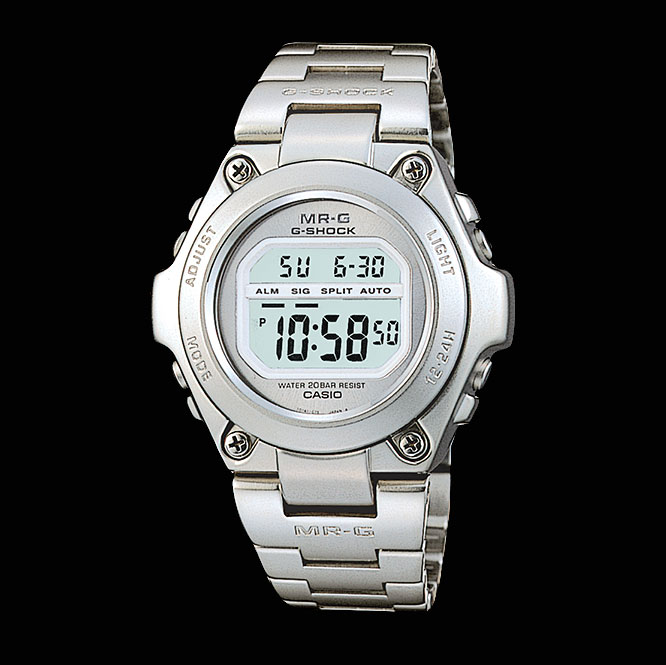
The 1996 all steel G-Shock MRG-100
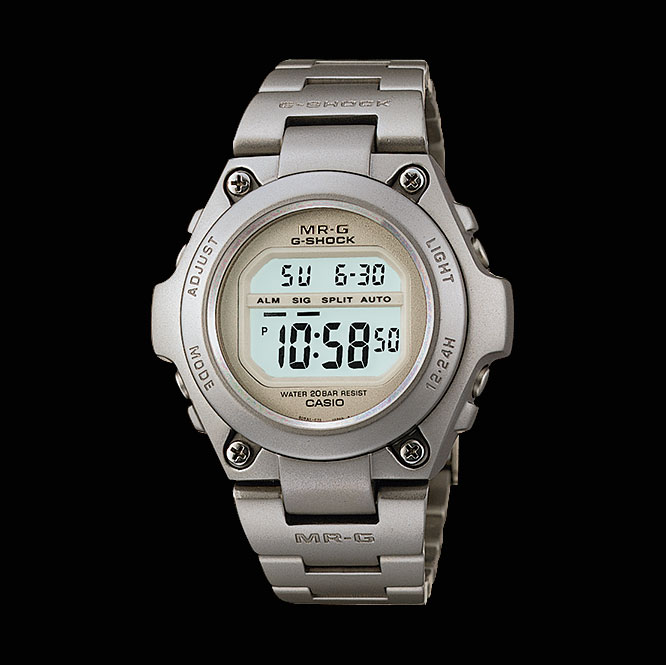
The 1996 all titanium G-Shock MRG-100T
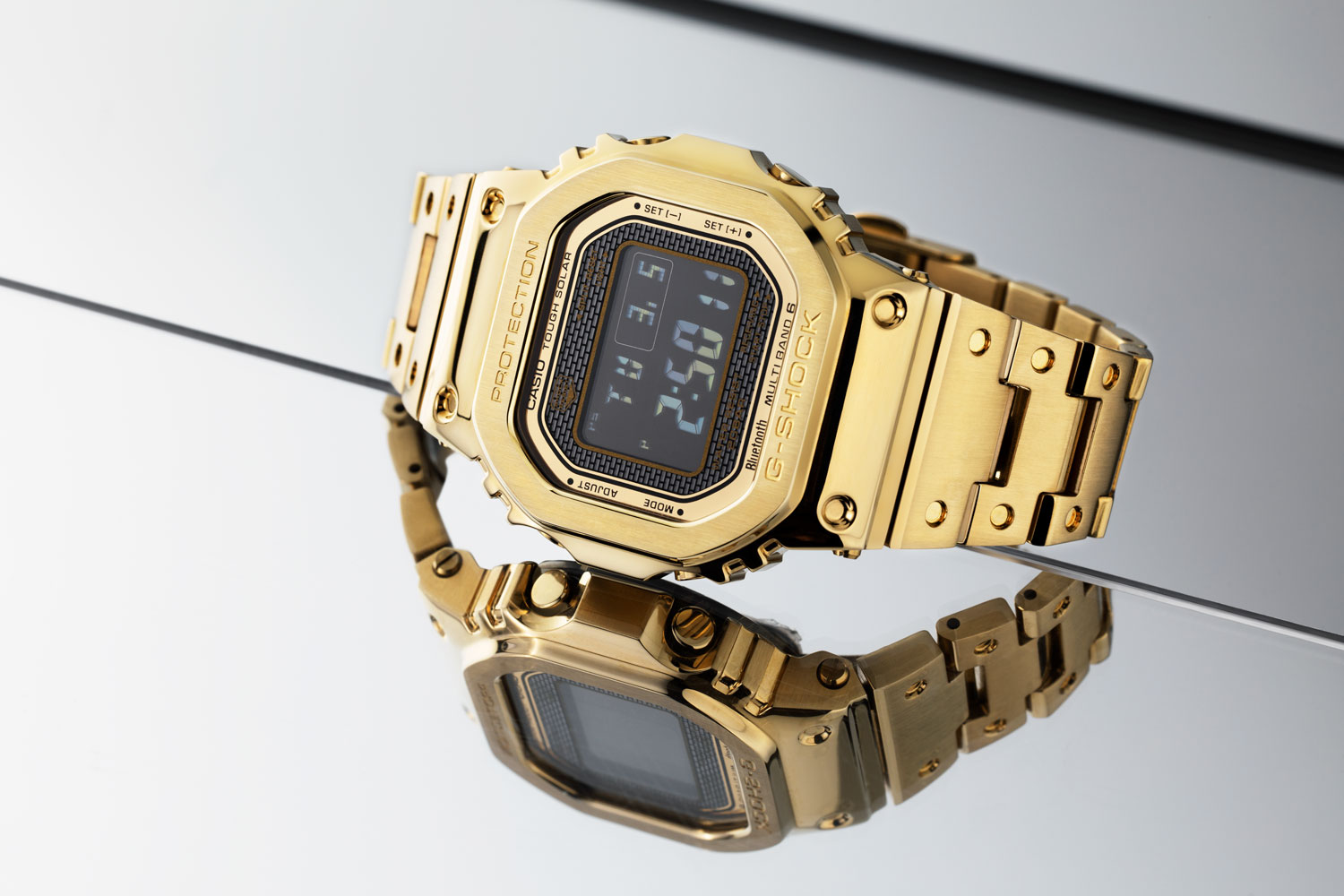
The IP coated gold G-SHOCK Full Metal 5000 (Image © Revolution)
The exact alloy used in the end remains under wraps. There is, therefore, reason to believe that the alloy is probably a concoction of Casio’s own making, so as to best cater to the production and life expectation of a G-SHOCK. Despite this, what we know for sure is that the complexity of the DW-5000 case and the challenges of working with titanium led Casio to create a dedicated assembly facility for the titanium GMW-B5000TB.
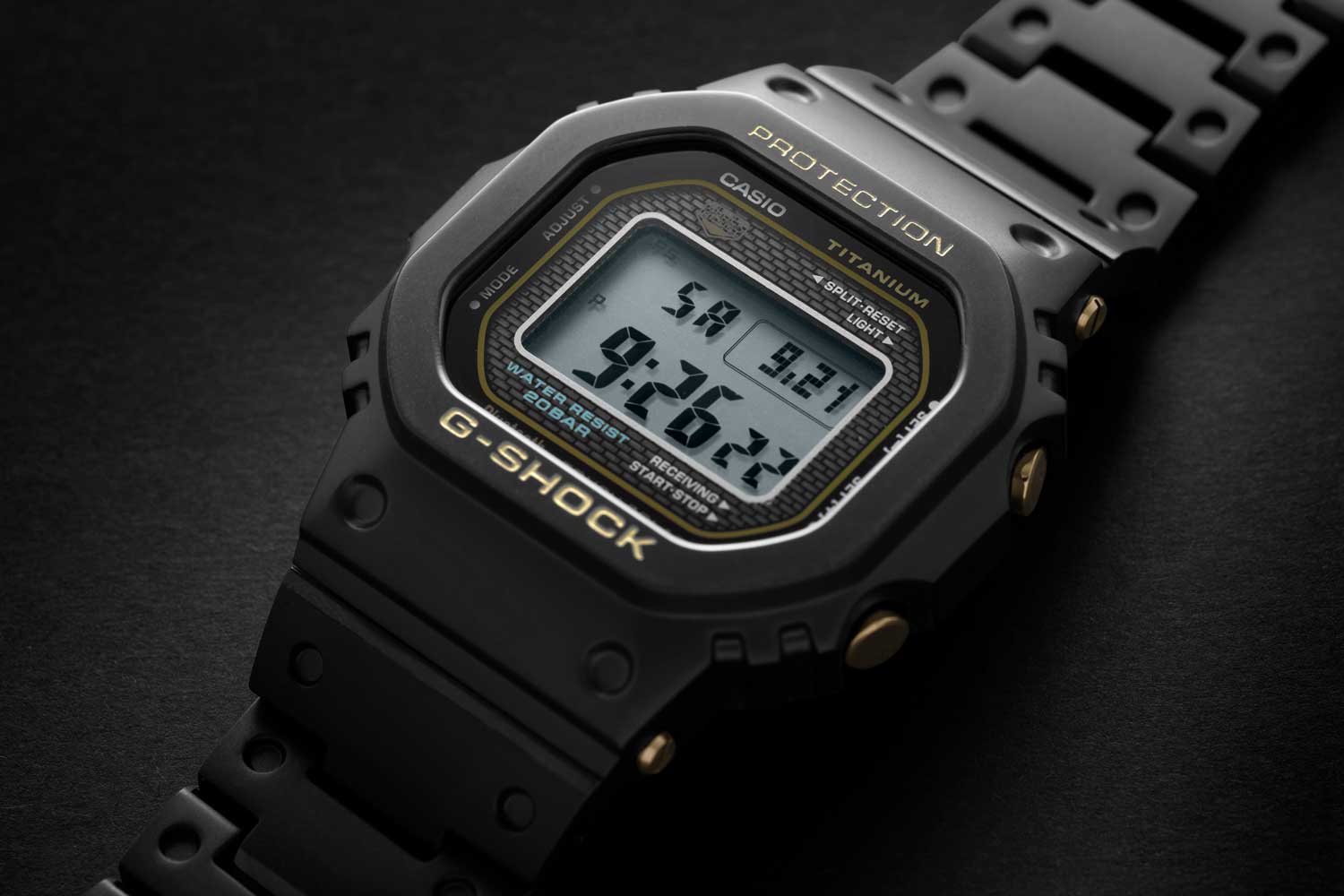
G-SHOCK Full Titanium GMW-B5000TB (Image © Revolution)
Speculation aside, with all of the great qualities of hardness and scratch resistance boasted by Casio’s preceding titanium G-SHOCK creations, we can expect no less from the DLC-coated GMW-B5000TB.
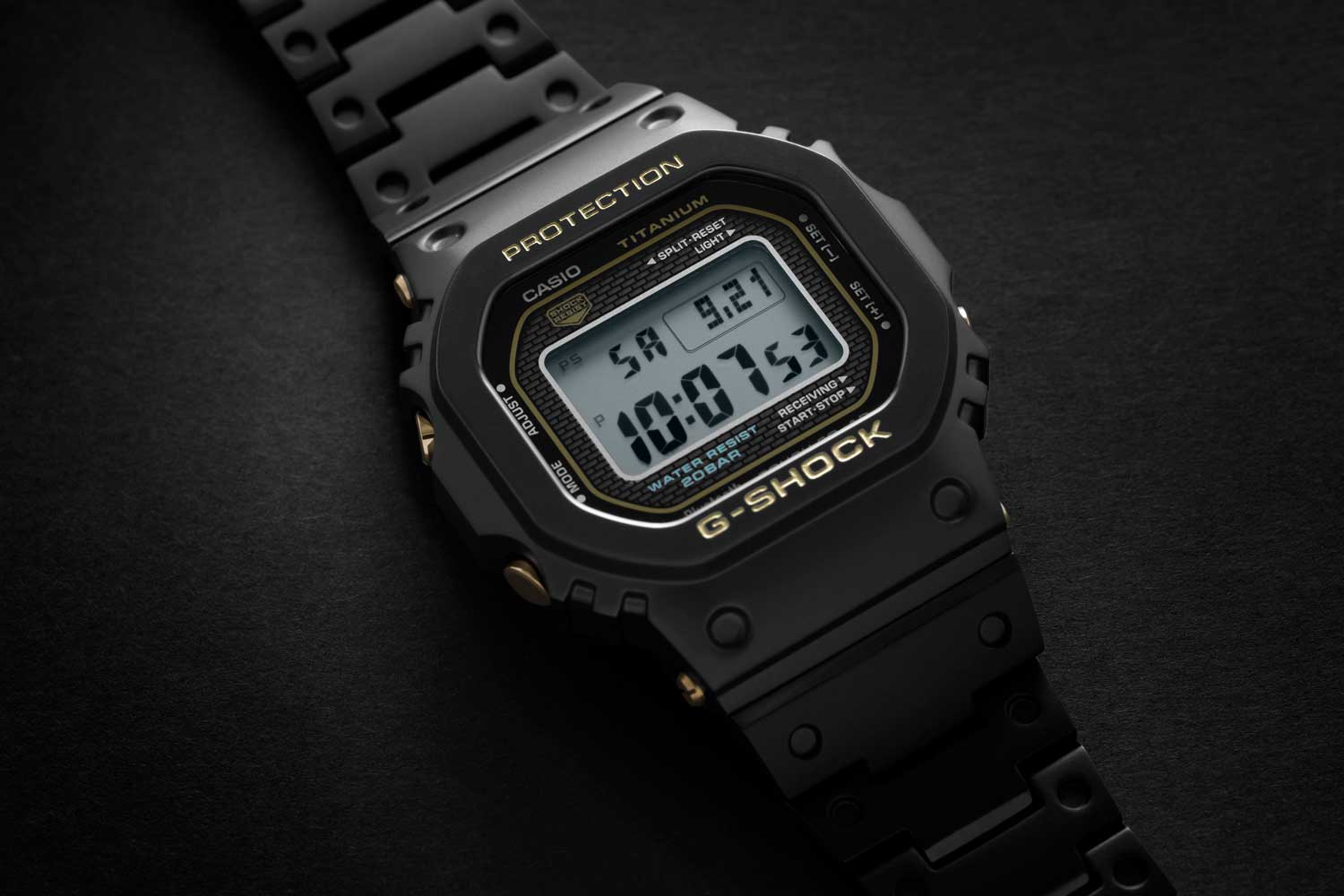
G-SHOCK Full Titanium GMW-B5000TB (Image © Revolution)
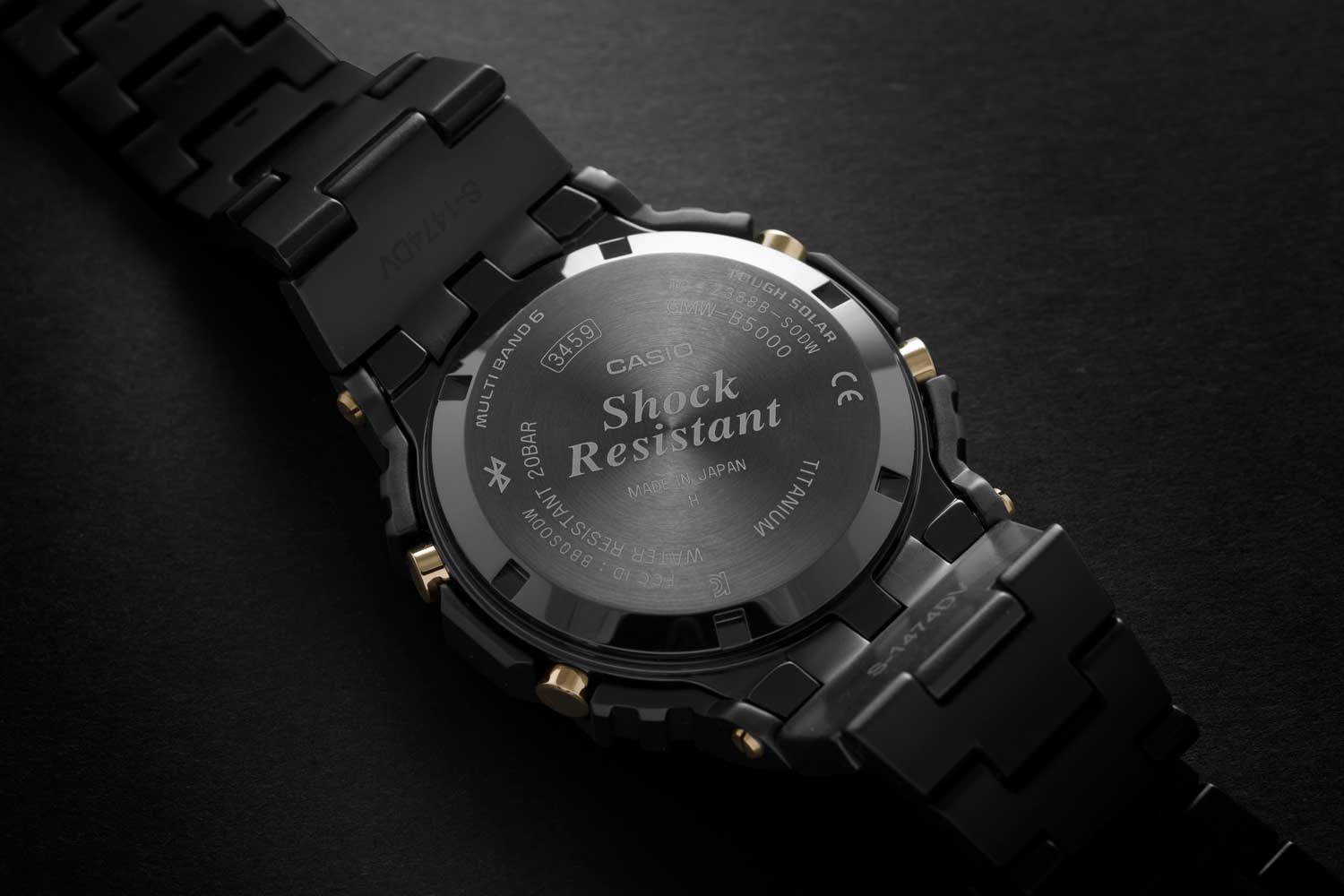
Caseback on the G-SHOCK Full Titanium GMW-B5000TB (Image © Revolution)










